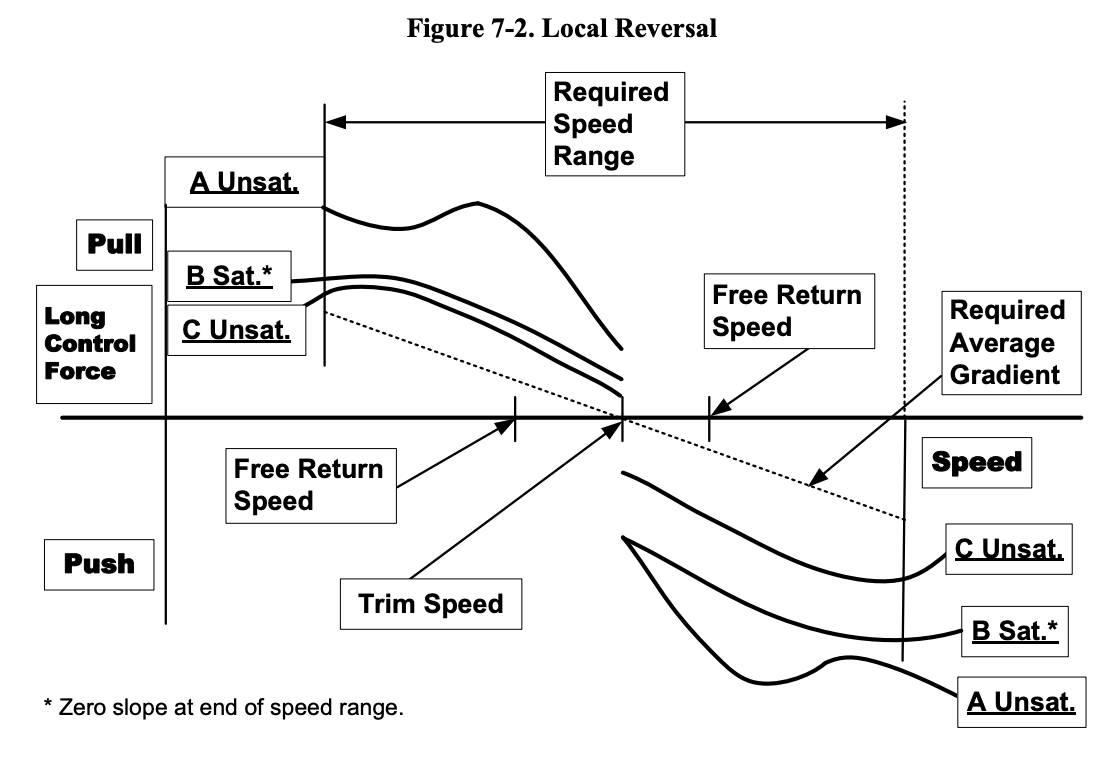The trigger mechanisms for the original MCAS had speed (mach) and aoa conditions. Those equate to conditions such as a wind up turn, which is quite a way from a wind shear avoidance and/or recovery case.
As far as what is and what isn't acceptable in force and gradient, AC25.7D covers the requirements, examples and suggested methods to ascertain § 25.173 Static longitudinal stability. Para C is of interest but so is A, B and D. For the amended MCAS, § 25.145 Longitudinal control may have been part of the compliance issue that led to the unfortunate turn of events in the repurposing of the MCAS from a high speed/manoeuver SAS to a low speed SAS system.
The regs provide for an average stick force gradient to be met, but there is additionally a requirement on “local” reversals in the stick force versus airspeed relationship over the range of airspeeds tested. That is shown in the AC, in figure 7-1 (page 7-4) and 7-2 (page 7-5).
Most times planes behave like darts, but they can get awkward, like the F-101 pitch up issue, the overbank of a BUFF, (where wing sweep and high bank angles with slip results in a lateral directional divergence, think
Czar 52 @ Fairchild, limitations in the Dash-1 etc. [Your T-38 got a mention in PIO history for the condition you note, NASA/WPAFB put out a great doc on the subject, and an instrumented 38 gave impressive data].


REF: AC25.7D
§ 25.145: page 5-15 to 5-19
§§ 25.173 and 25.175 pages 7-1 through 7-5